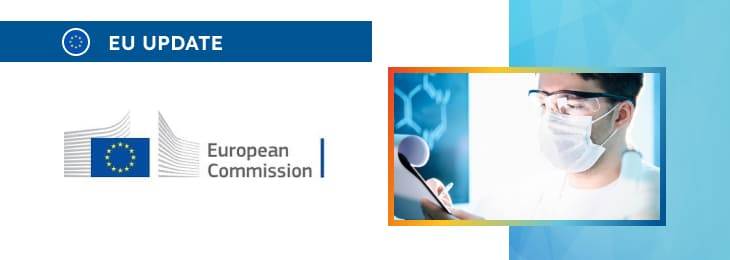The article provides a general overview of a vigilance system applicable to CE-marked medical devices intended to be marketed and used in the EU and also highlights certain specific aspects associated thereto.

Table of content
The Medical Device Coordination Group (MDCG), the EU organization of representatives of all the EU Member States collaborating for further improvement of the medical device regulatory framework, has published a guidance document dedicated to the vigilance system for CE-marked devices.
4In particular, the document represents the Device Specific Vigilance Guidance (DSVG) Template.
It is important to mention that guidance documents issued by the MDGC are generally non-binding in their legal nature and are merely intended to provide additional clarification regarding the existing regulatory framework, as well as recommendations to be taken into consideration by medical device manufacturers and other parties involved in order to ensure compliance thereto.
Furthermore, the MDCG reserves the right to make changes to the guidance and recommendations provided therein, should such changes be reasonably necessary to reflect corresponding amendments to the underlying legislation.
Introduction to Device Specific Vigilance Guidance (DSVG)
As explained by the MDCG, the Device Specific Vigilance Guidance (DSVG) aims to standardize vigilance reporting processes for manufacturers of specific devices, aligning practices with the existing regulatory framework.
This initiative seeks to clarify the responsibilities of manufacturers in reporting incidents related to specific devices to the Competent Authority. It is further stated that in order to ensure proper interpretation, it is essential for manufacturers to familiarize themselves with this guidance in conjunction with the Medical Device Regulation (MDR) 2017/745 and the In Vitro Diagnostic Regulation (IVDR) 2017/746.
It is important to mention that the DSVG neither replaces nor expands upon these foundational regulations but rather provides targeted advice for compliance.

Reporting Requirements
In accordance with the applicable reporting requirements, manufacturers must evaluate each event independently to determine its reportability, ensuring adherence to the MDR and IVDR’s statutory reporting obligations.
Critical to this process is the understanding of what constitutes a serious incident, requiring immediate notification to the Competent Authority.
This guidance emphasizes the importance of timely and accurate reporting, offering references to additional documents for further clarification, including MDCG 2023-31 for vigilance terms and concepts.
What Should Be Reported
The document further outlines the scope of matters subject to reporting and also provides additional clarifications to be taken into consideration by the parties involved when interpreting the relevant reporting requirements.
Serious Incidents
Manufacturers are obliged to report any serious incident in accordance with the requirements of the MDR and IVDR.
This includes situations of uncertainty about the reportability of an incident or when additional time is needed to ascertain the root cause.
The guidance specifies the timelines for such notifications, emphasizing the critical nature of prompt reporting.
Periodic Summary Reporting
The DSVG introduces the concept of Periodic Summary Reporting (PSR), a consolidated reporting mechanism for similar serious incidents.
This approach allows for the aggregation of incidents involving the same device or device type, provided the root cause is known or corrective action has been implemented.
The guidance details the format, content, and frequency of PSRs, highlighting the role of the Coordinating Competent Authority in this process.
Trend Reporting
Trend reporting is outlined as a requirement for both MDR and IVDR, focusing on the identification of statistically significant increases in the frequency or severity of incidents.
According to the document, manufacturers must report these trends to the Competent Authority, as they may indicate a shift in the risk-benefit analysis of a device.
The appropriate section of the guidance reiterates the importance of continuous monitoring and reporting to ensure patient and user safety.
DSVG “No” Examples and Clinical References
The DSVG provides clear examples of device-related problems that should be reported, aiming to assist manufacturers in identifying reportable incidents.
This section emphasizes the use of clinical references and guidelines in determining the reportability of specific events, encouraging manufacturers to consult current clinical guidelines for additional context.
IMDRF Terminologies
The guidance also refers to the International Medical Device Regulators Forum (IMDRF) terminologies for categorizing adverse events, directing manufacturers to the most recent version of the IMDRF adverse event code.
This resource is vitally important for ensuring that manufacturers use standardized language and classifications in their reports.
The guidance concludes with references to the key regulatory documents underpinning the DSVG, including the MDR and IVDR, and additional guidance documents on vigilance reporting and administrative practices. These references serve as essential resources for manufacturers seeking to comply with vigilance reporting requirements.
Conclusion
The present MDCG guidance outlines the essential components of the Device Specific Vigilance Guidance (DSVG), emphasizing the importance of compliance with regulatory requirements for vigilance reporting.
By adhering to this guidance, manufacturers can ensure the timely and effective reporting of incidents, contributing to the overall safety and efficacy of medical devices.
How Can RegDesk Help?
RegDesk is a holistic Regulatory Information Management System that provides medical device and pharma companies with regulatory intelligence for over 120 markets worldwide. It can help you prepare and publish global applications, manage standards, run change assessments, and obtain real-time alerts on regulatory changes through a centralized platform. Our clients also have access to our network of over 4000 compliance experts worldwide to obtain verification on critical questions. Global expansion has never been this simple.

